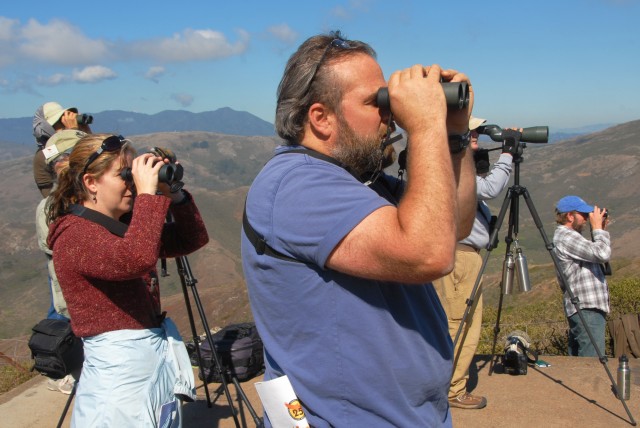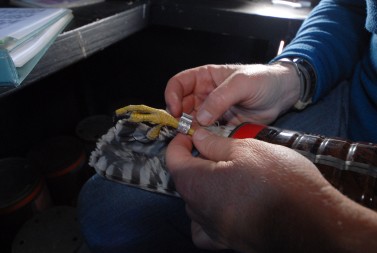
The raptor migration over the Marin Headlands is one of fall’s best, limited-engagement spectacles. Every September a highly-trained cadre of volunteers from the Golden Gate Raptor Observatory (GGRO) mounts Hawk Hill with binoculars and spotting scopes to document the passage of raptors as they gather to ride the rising warm air over the headlands before gliding across the mouth of the Bay. Reluctant to waste energy flying over open water, they “kettle” in flocks of mixed raptors of every kind to rise high in the air. While they’re rising in lazy circles, the hawk watchers busily identify as many as they can and count individuals. Some of the daily hawk counts from dawn to dusk (or inundation by thick fog) reach over 700 individuals. Their work has contributed so much knowledge about the ecology of raptors. Similar counts take place around the US with famous spots on the East Coast and in Texas.

GGRO volunteers also capture individual birds to tag or attach radio transmitters to track their migration path. A broad-winged hawk merited special attention this year. The individual, which the team named named Marathon, is unusual. The species is primarily found across Canada and throughout the eastern US during the breeding season, then most of them travel south to the tropical forests in Central and South America averaging 7,000 miles at 100 miles per day. They’re rarely seen on the West Coast, but regularly show up over Hawk Hill in small numbers during fall migration. You can track Marathon’s southward migration flight on GGRO’s blog. The other long-distance migrants seen in eastern Contra Costa County and the Central Valley are Swainson’s hawks. Their long-distance migration range spans from northern Canada to Argentina, averaging about 14,000 miles accomplished over the course of two months each way in spring and fall.
The next week or two should still be good for raptor viewing at Hawk Hill. Volunteers will be available to help you view and identify hawks overhead (with the exception of Oct. 6th and 7th during Fleet Week when even the volunteers won't brave the crowds!). If you’re interested in year-round raptor viewing and would like to be part of a team, you can also join EBRPD naturalist Mike Moran in eastern Contra Costa County. His fourth Thursday morning “Raptor Baseline” program counts and tracks raptors in this rich habitat area. No previous experience is necessary.
